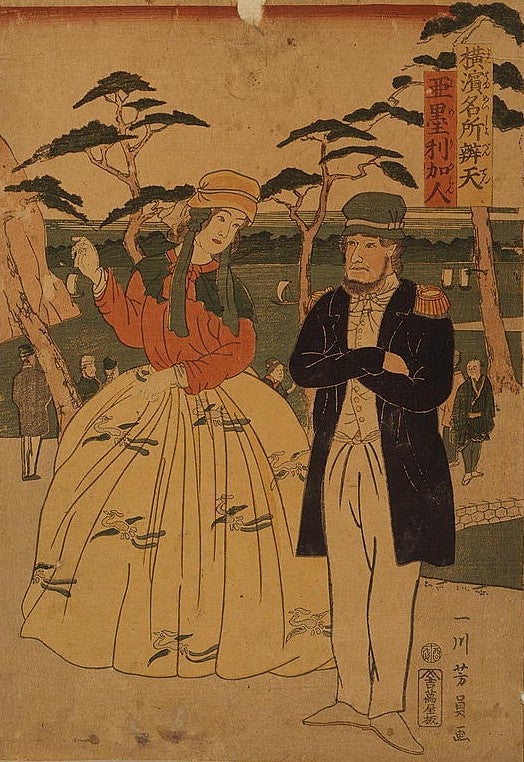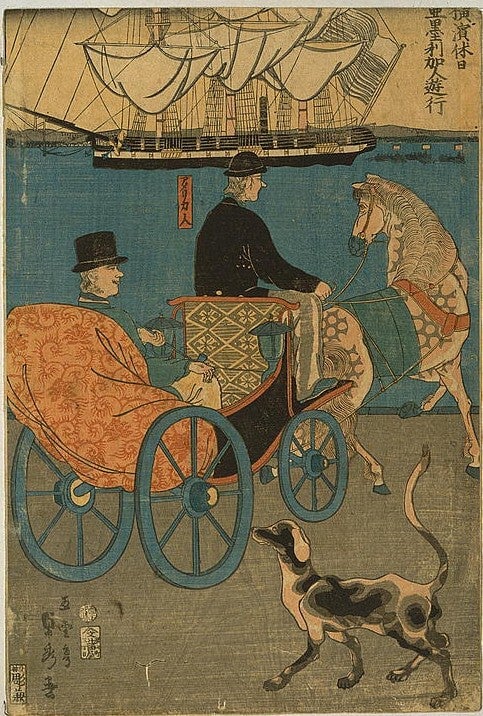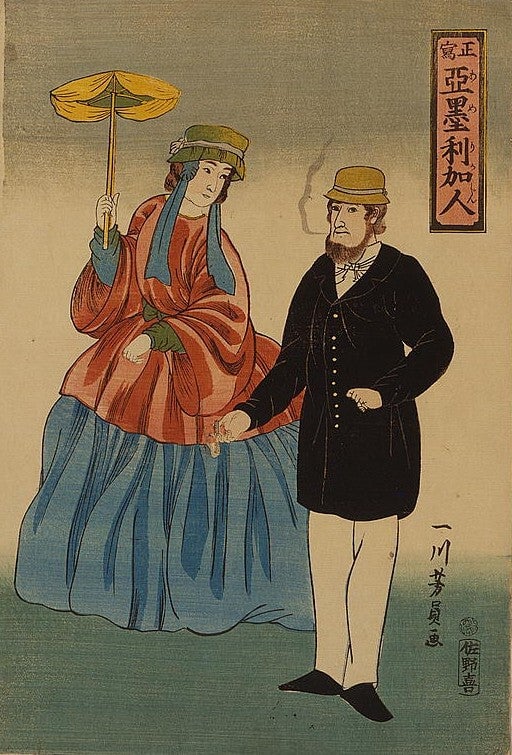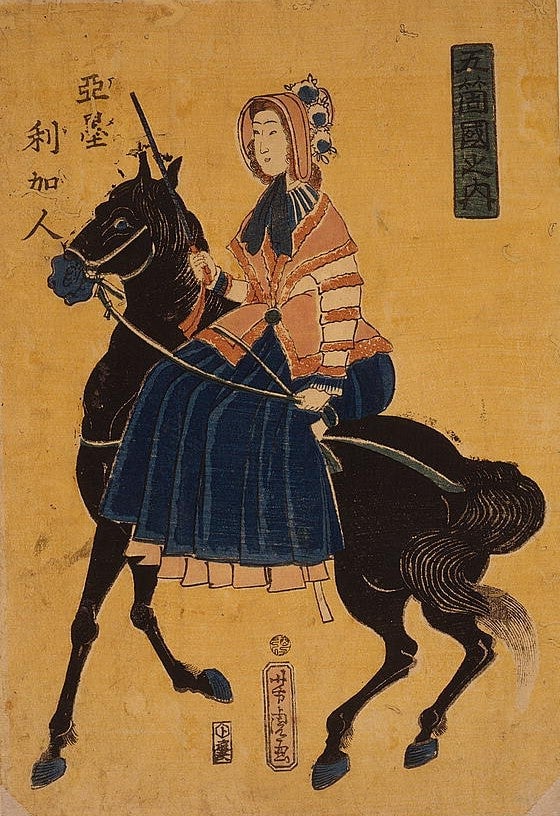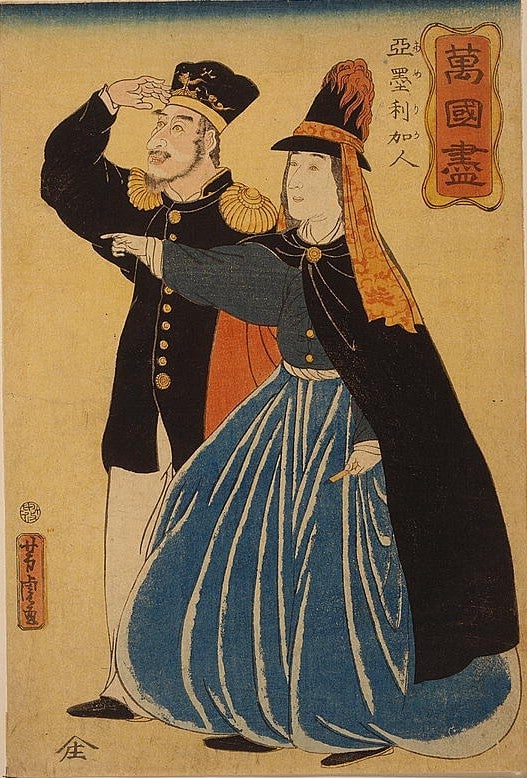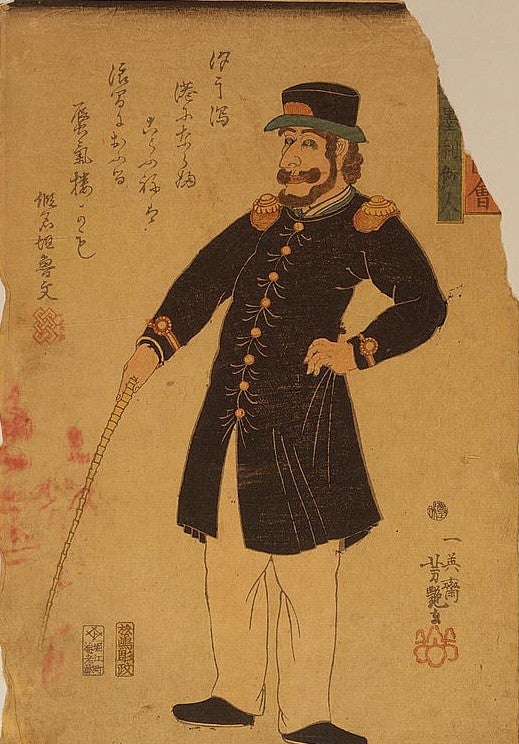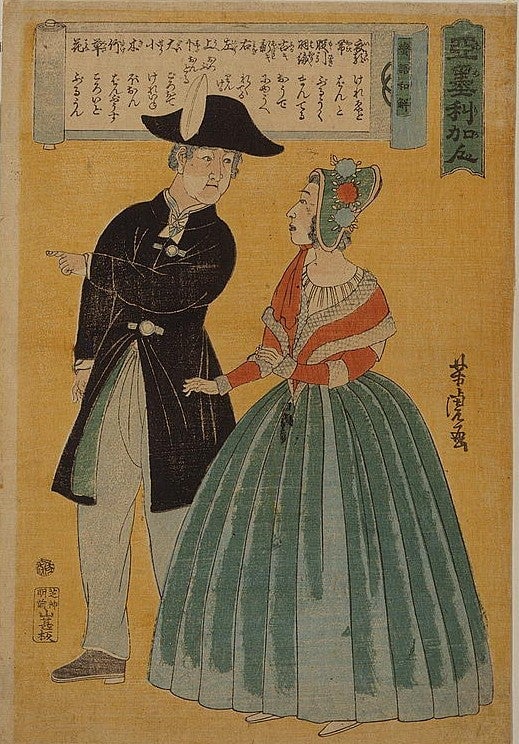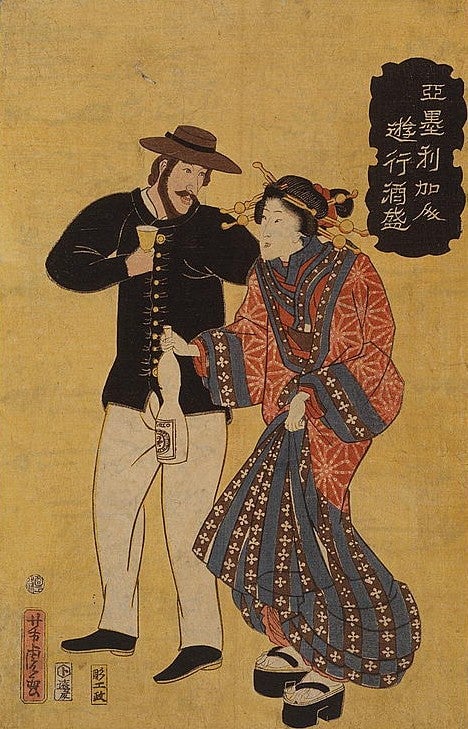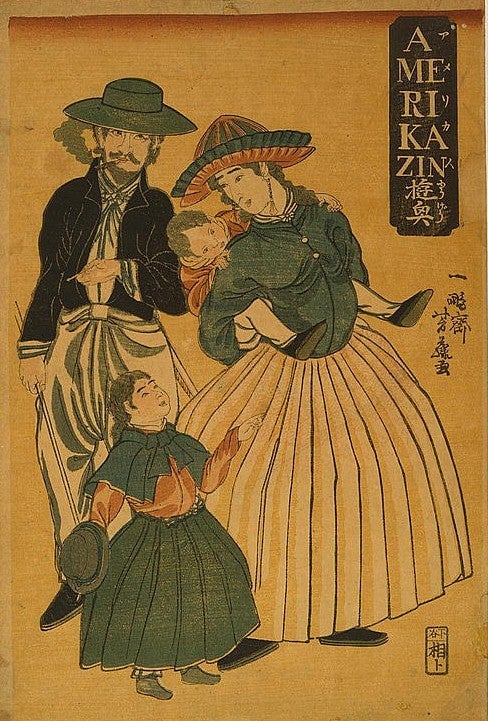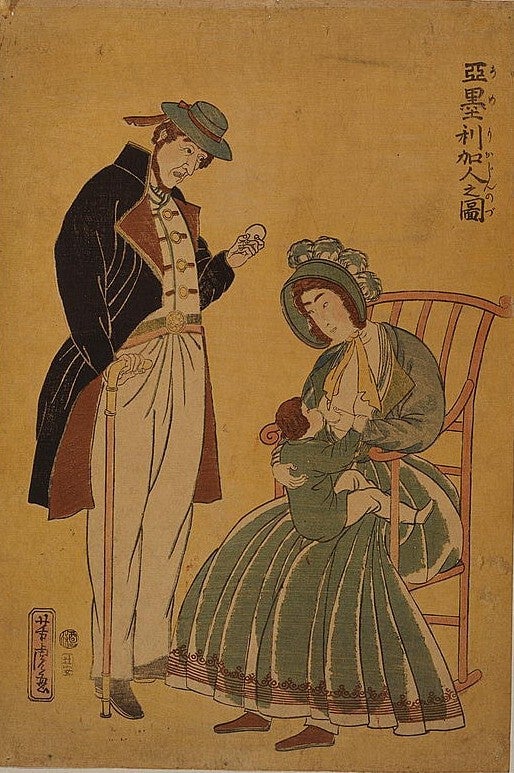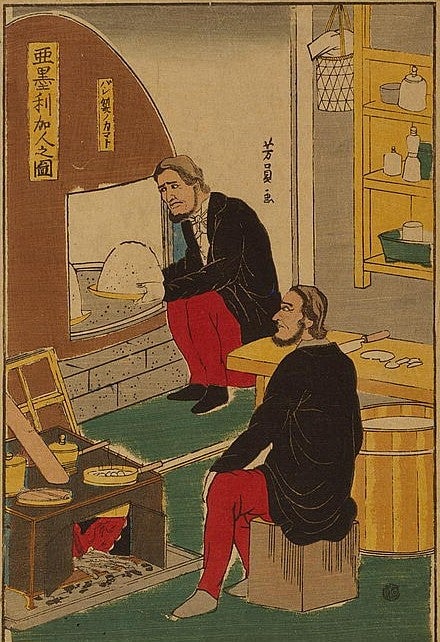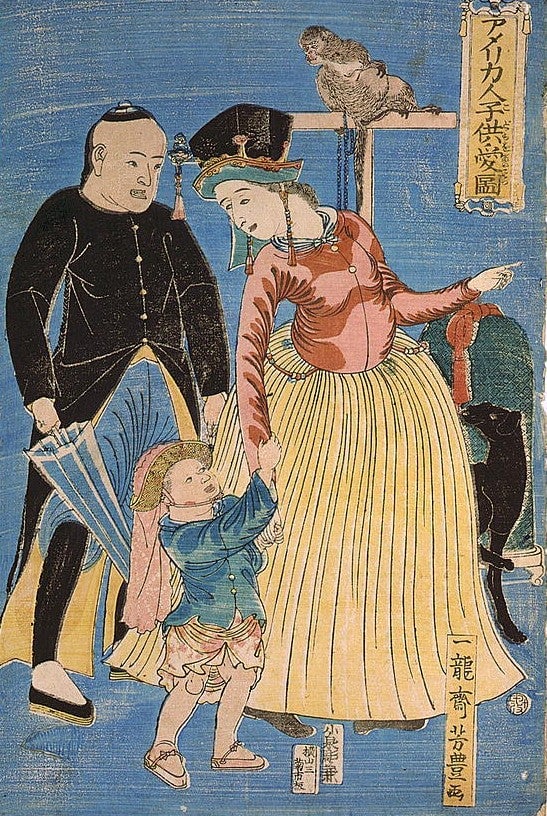150-year-old images reveal what Japanese artists once thought about exotic American visitors
“Strange” and “new” are relative terms, as a fascinating series of Japanese woodcuts unearthed by the Public Domain Review handily reminds us.
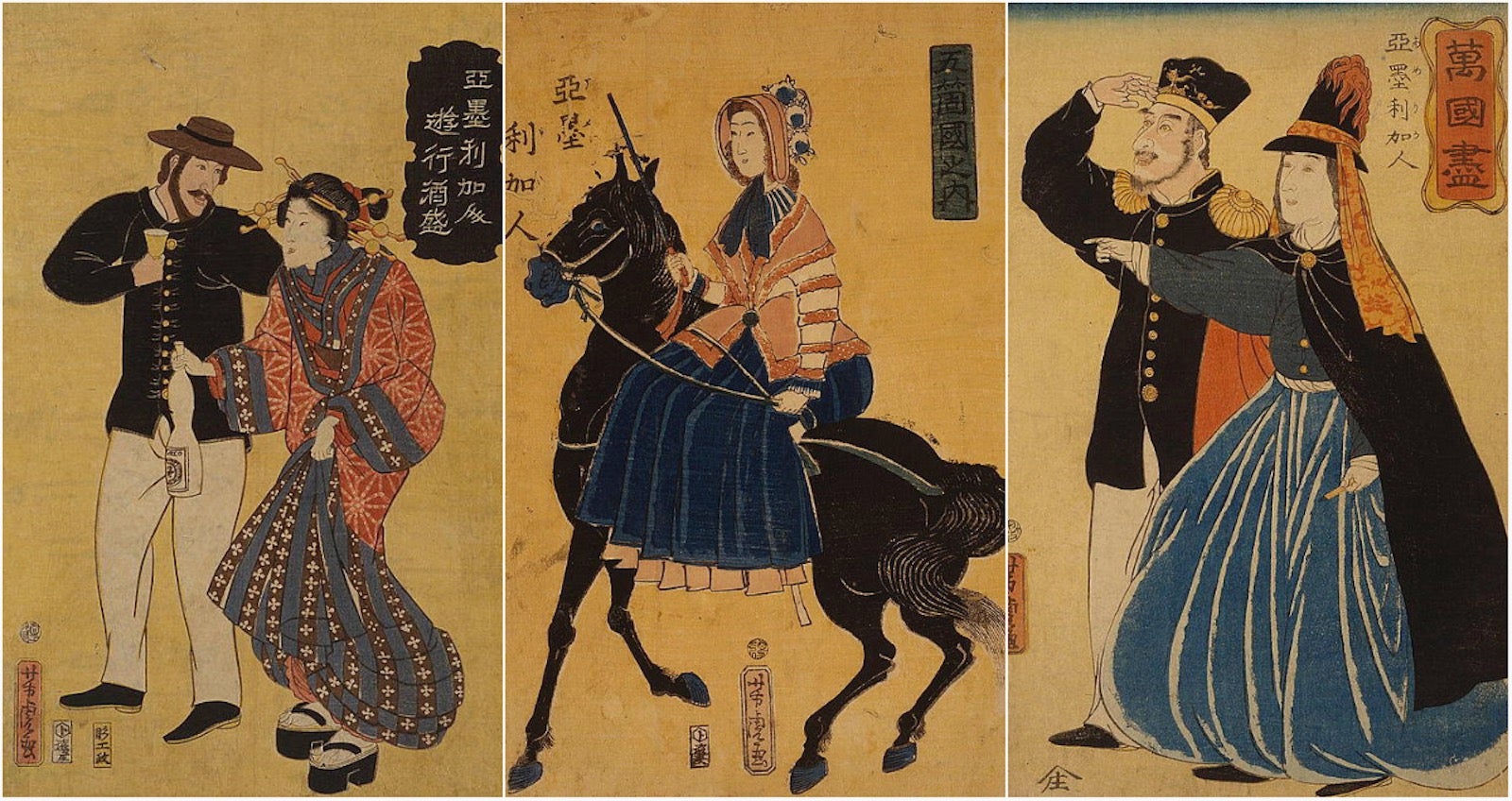

“Strange” and “new” are relative terms, as a fascinating series of Japanese woodcuts unearthed by the Public Domain Review handily reminds us.
Inspired by the dress and habits of visiting Americans, artists in 1850s Japan once dedicated themselves with an ethnographic intensity to the study of exotic Western newcomers. Today, the artwork provides Americans with a novel perspective on their ancestors, described in portrait titles like People of the Barbarian Nations – Americans, and Americans’ Love for Children.
This particular genre of woodcut is known as Yokohama-e, and was produced in the small fishing village of Yokohama, today one of Japan’s most international cities. Yokohama was one of the first ports that Japan opened to foreign trade, at the insistence of the American government. The US made several failed attempts to get Japan’s attention throughout the early 19th century before finally forcing Japan out of isolation in 1854.
The images below were retrieved from the digital archives of the US Library of Congress.
